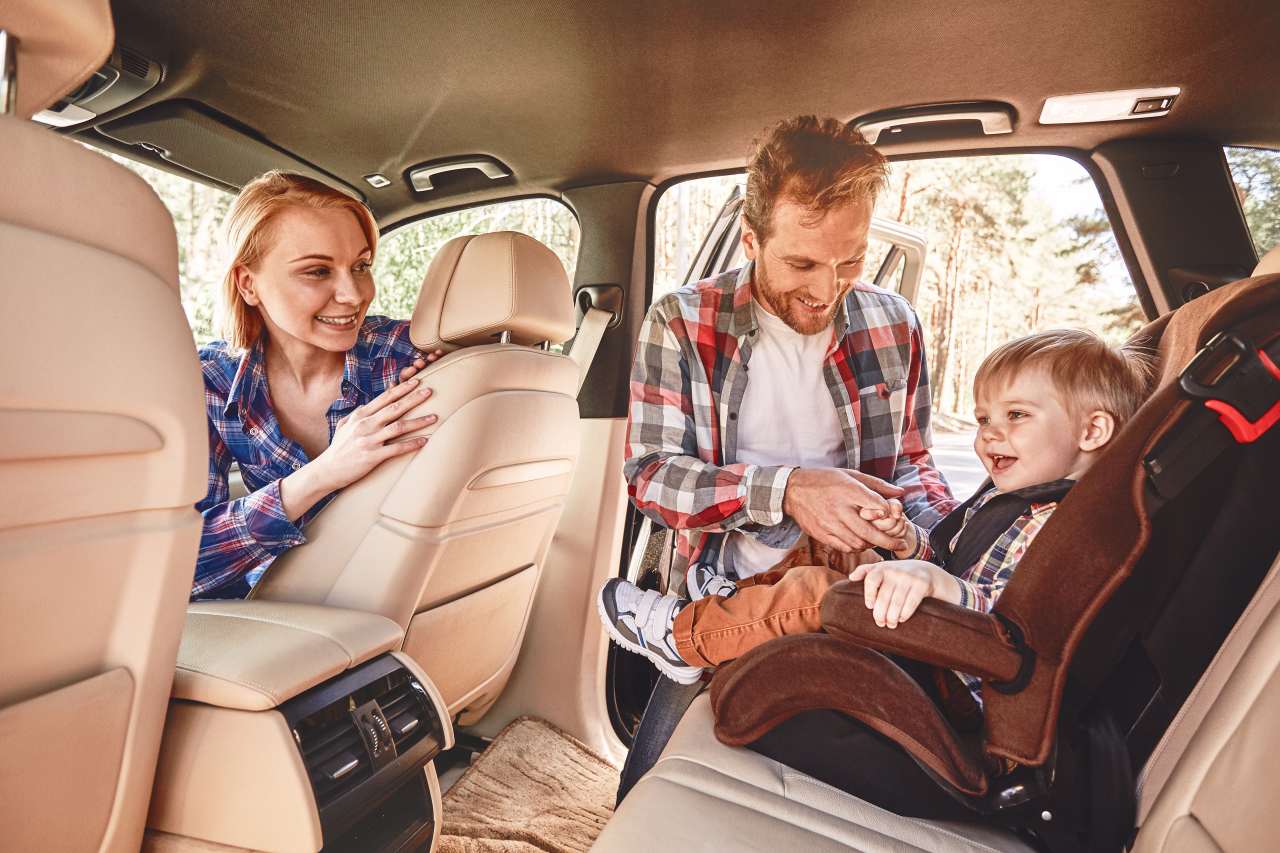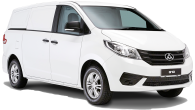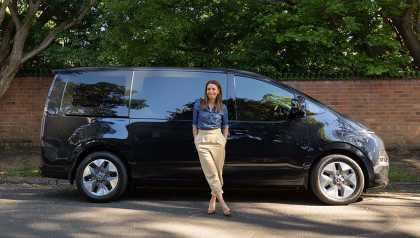Volkswagen’s Caddy Maxi people mover is the passenger version of the little panel van you’ve seen working as a tradie truck, or carrying pooches for a dog walking business, or maybe delivering flowers.
The idea seems like pure genius. Take a small van which is shaped for maximum space and put three rows of seats in it. Not only that, underneath the body is pretty much the same engineering as a Volkswagen Golf.
So, it’s a kind of a Golf people mover, right? And surely that must make for an awesome family car?
That’s what I was thinking, but then I tested the entry-grade with my family, and here’s what I found.
Volkswagen Caddy 5 2022: Cargo Maxi TDI280
| Engine Type | Diesel Turbo 4, 2.0L |
|---|---|
| Fuel Type | Diesel |
| Fuel Efficiency | 4.9L/100km (combined) |
| Seating | 2 |
| Price From | $28,270 - $34,100 |
What does it look like?
You can take the Caddy people mover out of the Caddy cargo van, but you can’t take the cargo van out of the people mover.
Yep, even though Volkswagen has added large windows the entire way along the people mover and put in seven seats, there’s no hiding its commercial origins.
There’s the tall roof, long nose, chunky door handles, long vertical tail-lights and identical face to its cargo siblings.
In Australia we only get the Caddy people mover in long wheelbase form and Volkswagen calls it the Maxi. So, our Caddy people movers are more than 4.8m long, which is closing in on the Kia Carnival’s 5.1m.

This new-generation Caddy arrived in Australia in 2021 and while the people mover may still look a lot like its cargo carrying brothers and sisters, Volkswagen’s designers have applied the same premium styling to the exterior as you’d find on other models such as the Golf, Polo and Tiguan.
The body-coloured bumpers on the Caddy step up that premium look and come standard even the entry-level version tested here.
A downside to choosing the entry-grade is that the standard wheels are steel covered by hubcaps with a design so over the top they seem to scream, “Look at me, I’m a hubcap!”

Inside, the Caddy has a less premium feel, and having driven the Caddy Cargo and Crewvan I can tell you that apart from the carpet, the people mover’s interior is identical, in all its plain plastic glory and in terms of its spacious, open cabin. The grade above this entry-level Caddy people mover is called Life and it comes with alloy wheels.

The entry-grade feels basic with the smaller 8.25-inch media screen accentuating its plastic surround. The Life has a 10-inch display which fills the space nicely.
Seats in the entry-grade have cloth upholstery, and 'Double Grid' is the name of the business-like pattern.
How does it drive?
The new Caddy is essentially a Volkswagen Golf underneath its van body, sharing the same underpinnings as the small hatch and wagon. Which means the Caddy drives more like a car than a van.
So, not only is the Caddy people mover comfortable, with good handling, it’s easy to drive daily for all the family duties you’ll be ticking off.
I did the school run, supermarket trips, the lot, and found the Caddy people mover not just easy to pilot but fun to drive.
The Caddy I tested had the 2.0-litre TDI 320 turbo-diesel engine, producing 90kW/320Nm. This engine and the smooth seven-speed dual-clutch automatic transmission performed perfectly with plenty of torque for good acceleration and conquering hills.

I need to give a shout-out to the transmission shifter. You’ll barely be able to spot it in the photos because its about a big as a domino tile, but it works better than any shifter I’ve ever used.
Moving from Reverse to Drive is a quick flick. I laughed at it when I first saw it and now I want all cars to have this type of shifter.
For a more car-like feel the petrol variant might be the better option as it sounds less like a delivery truck than the diesel.
At more than 4.8m stem to stern the Caddy people mover is long (remember, Australia only gets the Maxi long wheelbase version) and while you’ll fit into car park spaces easily, finding a spot you’ll squeeze into on the street can be tricky, although not any harder than a large SUV like a Kia Sorento.
The Caddy people mover is also better to drive than a large SUV because it doesn’t have the wobble and lean common to such big vehicles.
How spacious is it?
The greatest strengths of the Caddy people mover are its spaciousness and practicality. That’s what you get from a people mover based on a delivery van shaped to carry as much cargo as possible.
There are seven seats, legroom in the second row is adequate for me at 191cm to sit behind my driving position, and third row space is outstanding.

Seriously, the Caddy's third row offers more space than the Kia Sorento, Kia Carnival, Toyota Kluger or any other SUV or van I’ve tested.
Headroom is outrageously good. My seven-year old son can stand fully upright in the thing, and he’s 130cm tall.
Storage is excellent. There’s an overhead shelf above the front seats so enormous it looks like a bunk you could sleep in, gigantic front door pockets, plus cupholders and storage holes in all three rows.
The ‘boot’ capacity with the third row in place is 446 litres (VDA). You can remove the third-row seats altogether and that gives you 1720 litres. You can even take out the second-row seats and that opens up 3105 litres of cargo room.
The tailgate is a hatch-style lift design rather than the split-opening barn doors of the Caddy Cargo and Crewvan. The tailgate is large and when open provides a good awning high enough for me at 191cm tall to stand under with space to spare.
That kind of spaciousness and versatility is great for families.
How easy is it to use every day?
There are some major strengths to the Caddy people mover in terms of space and practicality, but there are weak points, too.
The first being the heavy sliding doors. They're designed to slide back into the lock, which meant my seven-year old not only had trouble opening the door, but just missed getting hit by it as it slid shut every time, were it not for me catching it.
Also not family friendly are the fixed second- and third-row windows. That’s right, you can’t open the windows in the back. The previous generation Caddy featured windows with a sliding section to let in a bit of fresh air, but not such option here.

The removable second and third row seats can be difficult to take out and put back into place. You’ll need two people because they’re heavy, and locking down the latch mechanism to re-secure them is tricky on your own. I did it and almost broke my fufu valve.
Also frustrating was having to fish out the key to lock and unlock the Caddy. The Life grade above our base car comes with a proximity key which is ideal for daily family use.
The Life also has push-button start, but not the base test car which needs the key in the ignition barrel to wake it up.
That said, the surfaces in the Caddy people mover are easy to clean, and the materials, switches and handles all feel hard wearing and high quality.
How safe is it?
I need to say this first. The Caddy people mover has curtain airbags which extend to cover the third-row passengers.
This is huge. There are plenty of family favourite SUVs out there which can’t make the same boast.
Okay, now for the rest of the safety section. The Caddy was given the maximum five-star rating by ANCAP when it was tested in 2021.
The advanced safety tech which comes standard on the Caddy people mover is excellent. There’s AEB with junction assistance which can detect vehicles, cyclists, and pedestrians. There’s also lane keeping assistance, blind spot warning and rear cross-traffic alert.

For child seats there are two ISOFIX points in the third row and two in the second row. There are three top tether mounts across the second row and two across the back seats.
Things I’d change? The reversing camera could be better, the picture quality is grainy, although you're supported by parking sensors front and rear.
Also, the halogen headlights seem as dim as candles. All cars should have LED headlights now, especially in Australia where country roads are dark.
What’s the tech like?
There could be more tech and what’s on board could be easier to use. That’s the top line summary.
See, the entry-grade Caddy Maxi has the small 8.25-inch multimedia display, no built-in sat nav and a regular analogue instrument cluster.
Climate, media and vehicle functions are accessed through the display, which has usability problems. Turning the start-stop petrol-saving system off means having to go through a menu in the display when a physical switch would be easier and faster to use.

The same goes for the air-conditioning. Dials would be easier to use than going through a screen menu.
There are only USB-C ports onboard. That caught me out because I had the more common USB-A cable, although Type C is more advanced and allows higher data transfer and faster charging.
There’s Apple CarPlay and Android Auto along with Bluetooth connectivity and a four-speaker stereo.
How much does it cost to own?
The Caddy Maxi with the TDI 320 2.0-litre, turbo-diesel engine lists for $48,140.
That’s pricey. The entry-level Kia Carnival people mover is almost a grand less, and a Hyundai Staria can be bought for about the same amount.
The Caddy is covered by Volkswagen’s five-year/unlimited kilometre warranty which is the norm for most carmakers.
Services are needed every 12 months or 15,000 kays, but the costs are expensive. You’re looking at $2700 over five years, an annual average of $540.

The official combined cycle fuel consumption figure for the Caddy Maxi 2.0-litre turbo diesel, with dual-clutch auto is 4.9L/100km.
Over more than 300km of mixed driving on test we averaged 8.9L/100km.
With the 50-litre tank brimmed that equates to a range of just under 850km using the official figure, but only 560km using our real-world number.
Verdict
The Caddy people mover is almost a seriously great family car, thanks to its practicality, space, safety, and easy driving nature. But it’s let down by those heavy sliding doors, back windows which don’t open, and a lack of convenience features on the entry-grade.
Overall, it's a good family car, so I’m giving it 3.5 out of five. But my son says 4.5 because he loves any car he can stand up in.











.jpg)





.jpg)



.jpg)
Comments